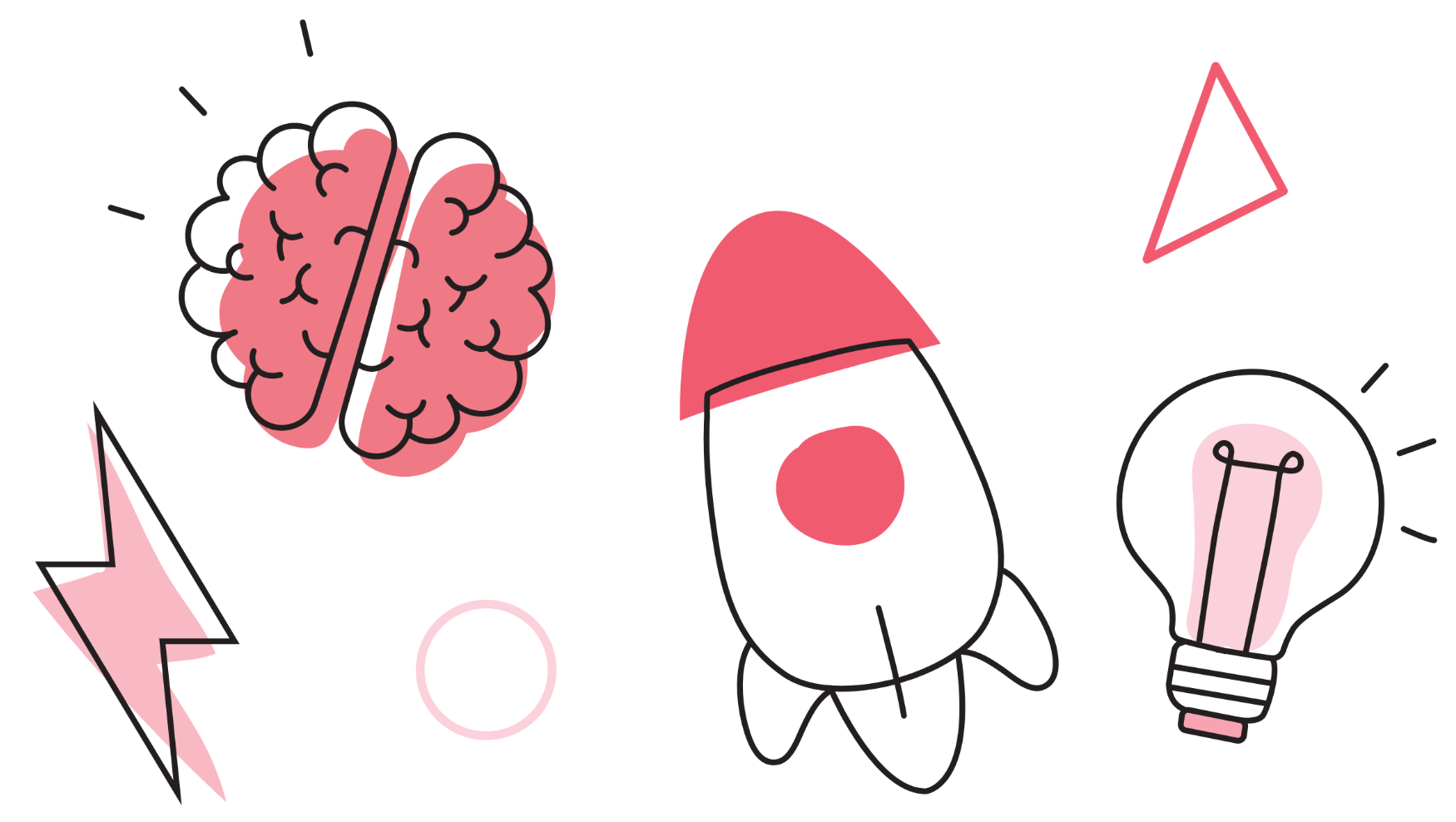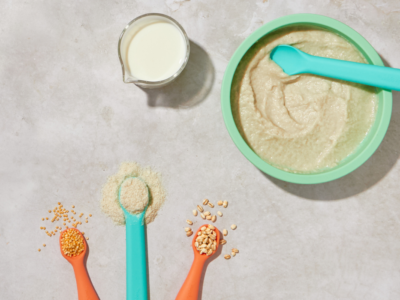There’s a lot of learning that goes into motherhood. Like, you just grew a human…now what?
Did you know iron is an essential mineral for your baby’s growth and development? It’s one of the most common nutritional deficiencies, yet has a real impact on your little one’s brain health. We’re breaking down what you need to know about your little’s iron intake.
Iron is essential to brain function
Even though your babe is born with enough iron to get them through the first four months of life, they need to continue their iron intake before it runs out, because iron is essential to brain health (1,2). Iron is involved in all energy production within the nerve cells and that energy is what allows nerves to transmit signals all over the body. This powerful mineral is responsible for the proper development of proper development of learning ability, motor coordination, and language. NBD.
25% of preschool children have an iron deficiency anemia
According to Anita Tee, published scientist and clinical nutritionist, iron deficiencies in infants and children can have serious consequences. “One of the major worries is the impact low iron levels have on neurodevelopment,” she said. By the time a child is three, their brain has tripled in size and iron has been shown to impact overall cognitive function as well as behavior and performance (13).
It can be hard to spot iron deficiency
Pale skin tone, atypical fatigue, slowed growth, or missed developmental milestones might mean an iron deficiency. Look out for loss of appetite, an erratic or abnormal breathing rate, or frequent infections as well. Since iron deficiency is among the most common nutritional deficiencies kiddos face, the American Academy of Pediatrics recommends that all infants, starting from age nine months, be routinely tested for iron deficiency until they are one year old . If your little one has any of these signs, consult your pediatrician.
Focus on foods that contain iron
Once you start to introduce solids and start building your future foodie’s palate, make sure you’re filling your babe’s belly with iron-rich foods (19). The Mayo Clinic recommends 11mg of iron daily for infants 7-12 months old. It’s also important for your little to eat foods that enhance the absorption of iron like vitamin C rich fruits. We’ve got blends that do the trick, like our Avocado Greens Bowl, which both have a nice dose of vitamin C—helping your babe absorb more iron!
You can boost your babe’s iron intake with supplements
If your baby is battling a deficiency, don’t panic! Anita suggests starting an iron supplement to ensure appropriate levels of iron at around four months old and continuing until you’re little one is eating at least two iron-rich foods each day. Make sure to speak with your pediatrician before adding in any supplement.
We did the research so you don’t have to. Still, if you want to check our sources, here are our references:
- Mayo Clinic. Iron deficiency in children: Prevention tips for parents. Children’s Health.
- Lanzkowsky, P. Chapter 6 – Iron-Deficiency Anemia. Lanzkowsky’s Manual of Pediatric Hematology and Oncology (Sixth Edition). 2016, Pages 69-83
- Domellof, M., et al. Iron Requirements of Infants and Toddlers. JPGN. 2014;58: 119–129.
- Geneva: Switzerland: World Health Organization; 2001. WHO/UNICEF/UNU. Iron Deficiency Anemia Assessment, Prevention, and Control; p. 114.
- Wood RJ, Ronnenberg A. Iron. In: Shils ME, Shike M, Ross AC, Caballero B, Cousins RJ, editors. Modern Nutrition in Health And Disease. 10th ed. Baltimore: Lippincott Williams & Wilkins; 2005. pp. 248–70.
- McLean E, Cogswell M, Egli I, et al. Worldwide prevalence of anaemia, WHO Vitamin and Mineral Nutrition Information System, 1993–2005. Public Health Nutr 2009;12:444–54.
- Bramhagen A-C, Axelsson I. Iron status of children in southern Sweden: effects of cow’s milk and follow-on formula. Acta Paediatr 1999;88:1333–7.
- Male C, Persson LA, Freeman V, et al. Prevalence of iron deficiency in 12-mo-old infants from 11 European areas and influence of dietary factors on iron status (Euro-Growth Study). Acta Paediatr 2001;90: 492–8.
- Hay G, Sandstad B, Whitelaw A, et al. Iron status in a group of Norwegian children aged 6–24 months. Acta Paediatr 2004; 93:592–8.
- Vendt N, Grunberg H, Leedo S, et al. Prevalence and causes of iron deficiency anemias in infants aged 9 to 12 months in Estonia. Medicina (Kaunas) 2007;43:947–52.
- Beard J. Iron deficiency alters brain development and functioning. J Nutr 2003;133 (5 suppl 1):1468S–72S.
- Carlson ES, Tkac I, Magid R, et al. Iron is essential for neuron development and memory function in mouse hippocampus. J Nutr 2009;139:672–9.
- Lozoff B, Beard J, Connor J, et al. Long-lasting neural and behavioral effects of iron deficiency in infancy. Nutr Rev 2006;64 (5 pt 2):S34–43.
- Collard KJ. Iron homeostasis in the neonate. Pediatrics. 2009;123:1208–16.
- Ziegler EE, Nelson SE, Jeter JM. Iron supplementation of breastfed infants from an early age. Am J Clin Nutr. 2009;89:525–32.
- Ziegler EE, Nelson SE, Jeter JM. Iron supplementation of breastfed infants. Nutr Rev. 2011;69Suppl 1:S71–7.
- Institute of Medicine Food Nutrition Board. Dietary reference intakes: vitamin A, vitamin K, arsenic, boron, chromium, copper, iodine, iron, manganese, molybdenum, nickel, silicon, vanadium and zinc. Washington (DC): National Academies Press; 2001.
- Petry, N.; Olofin, I.; Boy, E.; Donahue Angel, M.; Rohner, F. The Effect of Low Dose Iron and Zinc Intake on Child Micronutrient Status and Development during the First 1000 Days of Life: A Systematic Review and Meta-Analysis. Nutrients 2016, 8, 773.
- Chen, A., et al. Screening for Iron Deficiency. Pediatrics in Review Vol.23 No.5 May 2002.
- Hurrell R, Egli I. Iron bioavailability and dietary reference values. Am J Clin Nutr. 2010 May; 91(5):1461S-1467S.
- Teucher B, Olivares M, Cori H. Enhancers of iron absorption: ascorbic acid and other organic acids. Int J Vitam Nutr Res. 2004 Nov; 74(6):403-19.
- Lynch SR. The effect of calcium on iron absorption. Nutr Res Rev. 2000 Dec; 13(2):141-58.
- Lonnerdal, B. Excess iron intake as a factor in growth, infections, and development of infants and young children. The American Journal of Clinical Nutrition, Volume 106, Issue suppl_6, December 2017, Pages 1681S–1687S.
- Paganini, D.; Uyoga, M.A.; Zimmermann, M.B. Iron Fortification of Foods for Infants and Children in Low-Income Countries: Effects on the Gut Microbiome, Gut Inflammation, and Diarrhea. Nutrients 2016, 8, 494.



